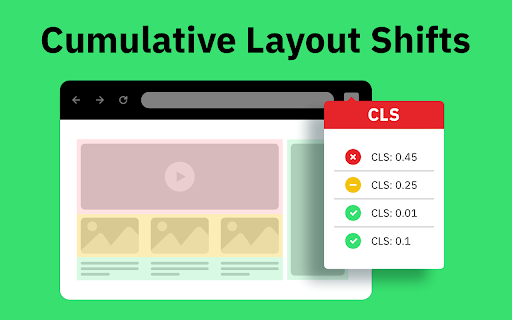Сumulative layout shift in Chrome 使用 OffiDocs
Ad
商品描述
Monitor Cumulative Layout Shift to enhance Google Page Experience Core Web Vitals performance, and Largest Contentful Paint metrics.
In the ever-evolving world of web performance, user experience is more important than ever. Google’s Core Web Vitals are a crucial factor in determining how well a website performs in terms of Google Page Experience core web vitals. Among the key metrics that Google uses to measure UX, Cumulative Layout Shift stands out as a critical one. This metric evaluates how stable your page layout is, ensuring users aren’t frustrated by unexpected movements during page load.
If you want your site to rank higher and offer an exceptional experience, understanding what is a CLS, how to test it, and how to improve it is vital. This cumulative layout shift guide will take you through everything you need to know about CLS and how to optimize it to ensure better user satisfaction and SEO results.
什么是累积布局偏移?
Cumulative Layout Shift is a metric that measures the cumulative score of unexpected shifts in the layout of a webpage while it's loading. Essentially, if the content on your webpage moves unexpectedly after the page starts to load (like images or buttons shifting positions), it causes a poor experience for the user, leading to CLS.
为什么 CLS 很重要?
Google Ranking Factor: CLS is one of the key elements in the Core Web Vitals, which are used by Google to assess the Google Page Experience core web vitals. A poor CLS can harm your rankings.
User Experience: Users expect pages to load quickly and remain stable. Any unexpected content layout shift can frustrate users and cause them to abandon the page.
SEO Impact: Core Web Vitals SEO optimization, which includes improving your CLS, directly impacts your site's search engine rankings.
Understanding Core Web Vitals: The Big Picture
To fully understand the importance of CLS, you need to grasp how it fits into the larger picture of Core Web Vitals. These three metrics—LCP (Largest Contentful Paint element), FID (First Input Delay), and CLS—play a significant role in determining user satisfaction.
Core Web Vitals Breakdown:














![在带有 OffiDocs 的 Chrome 中,我们在 PC 笔记本电脑 [新标签主题] 中](https://www.offidocs.com/imageswebp/60_60_amongusonpclaptop[newtabtheme].jpg.webp)

